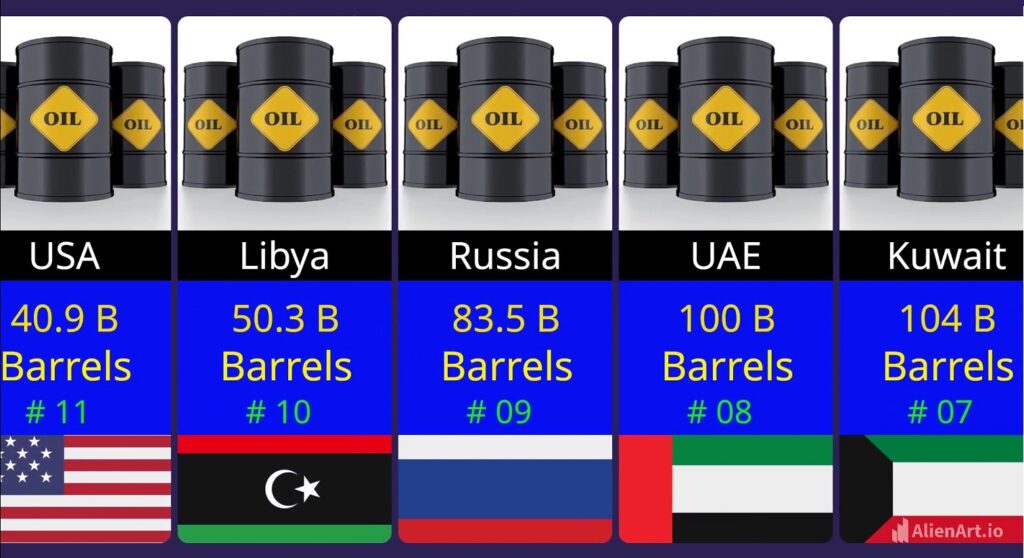
Crude oil prices jumped sharply on Friday, fueled by speculation that former President Trump may soon announce tough new sanctions on Russian energy exports. August West Texas Intermediate (WTI) crude closed up $1.88, or 2.82%, while August RBOB gasoline rose 3.46 cents, or 1.61%.
Why Are Crude Prices Rising?
The sudden rally came after Trump teased a “major statement on Russia” scheduled for Monday and criticized Russian President Vladimir Putin for continuing the war in Ukraine. This raised speculation that Trump might impose sanctions on Russian oil or support a Senate-backed bill that could introduce 500% tariffs on countries like China and India if they purchase Russian energy.
OPEC+ Could Pause Production Hikes
Adding to the momentum, Bloomberg reported Thursday that OPEC+ is considering halting further oil production increases starting in October. The group is expected to implement its next planned hike of 548,000 barrels per day (bpd) in September but may hold off afterward. OPEC+ is worried about a potential decline in global oil demand in the second half of 2025, which could lead to a supply glut.
The International Energy Agency (IEA) echoed those concerns, stating that oil inventories are building at a rate of 1 million bpd and predicting a global surplus of crude equal to 1.5% of total consumption by the fourth quarter of 2025.

Bearish Factors Still in Play
Despite Friday’s surge, there are factors weighing down oil prices. A stronger U.S. dollar and rising trade tensions could slow economic growth and reduce energy demand. Trump recently announced plans to raise tariffs on Canadian goods and suggested blanket tariffs of 15% to 20% on most U.S. trade partners.
OPEC+ Output Expansions Continue—for Now
On Sunday, OPEC+ agreed to raise production by 548,000 bpd starting August 1, exceeding the expected increase of 411,000 bpd. Saudi Arabia hinted that similar increases may follow. This move is seen as a strategy to cool oil prices and discipline overproducing members like Iraq and Kazakhstan. Overall, the group is working to gradually reverse a 2-year-long production cut, aiming to restore 2.2 million bpd by September 2026.
June production data showed a rise of 360,000 bpd, bringing OPEC+ output to a 1.5-year high of 28.10 million bpd.
Middle East Tensions Add Pressure
Tensions in the Middle East are also keeping crude prices elevated. On Tuesday, Yemen’s Houthi rebels attacked a second merchant ship in the Red Sea, following a similar attack on Sunday. These incidents are expected to raise freight and insurance costs, making Middle Eastern oil exports more expensive. In response, Israeli fighter jets have conducted retaliatory strikes, and U.S. involvement may follow.
Tanker Storage Points to Oversupply Risk
On a more bearish note, oil stored on stationary tankers (idle for 7 days or more) increased 3.6% to 79.55 million barrels in the week ending July 4, according to data from Vortexa. This trend suggests a growing supply glut, which could pressure prices down if demand weakens.
U.S. Inventory and Production Trends

The Energy Information Administration (EIA) reported Wednesday that:
- U.S. crude oil inventories are 8.0% below the 5-year seasonal average.
- Gasoline inventories are 1.2% below the average.
- Distillate inventories (used in diesel and jet fuel) are 23.6% below average.
Meanwhile, U.S. crude production fell slightly by 0.4% to 13.385 million bpd for the week ending July 4—just below the record high of 13.631 million bpd reached in December 2023.
U.S. Oil Rigs Hit Multi-Year Low
According to Baker Hughes, the number of active U.S. oil rigs fell by 1 rig to 424 last week, hitting a 3.75-year low. Since December 2022, rig counts have dropped significantly from their 5.25-year high of 627 rigs, reflecting cautious sentiment in the U.S. oil industry.
Bottom Line: A mix of geopolitical tension, potential U.S. sanctions on Russian oil, and uncertainty over future OPEC+ production has pushed oil prices higher. But with concerns about oversupply and slowing demand, the market remains extremely volatile. Stay tuned as Trump’s Monday announcement could trigger further movement.